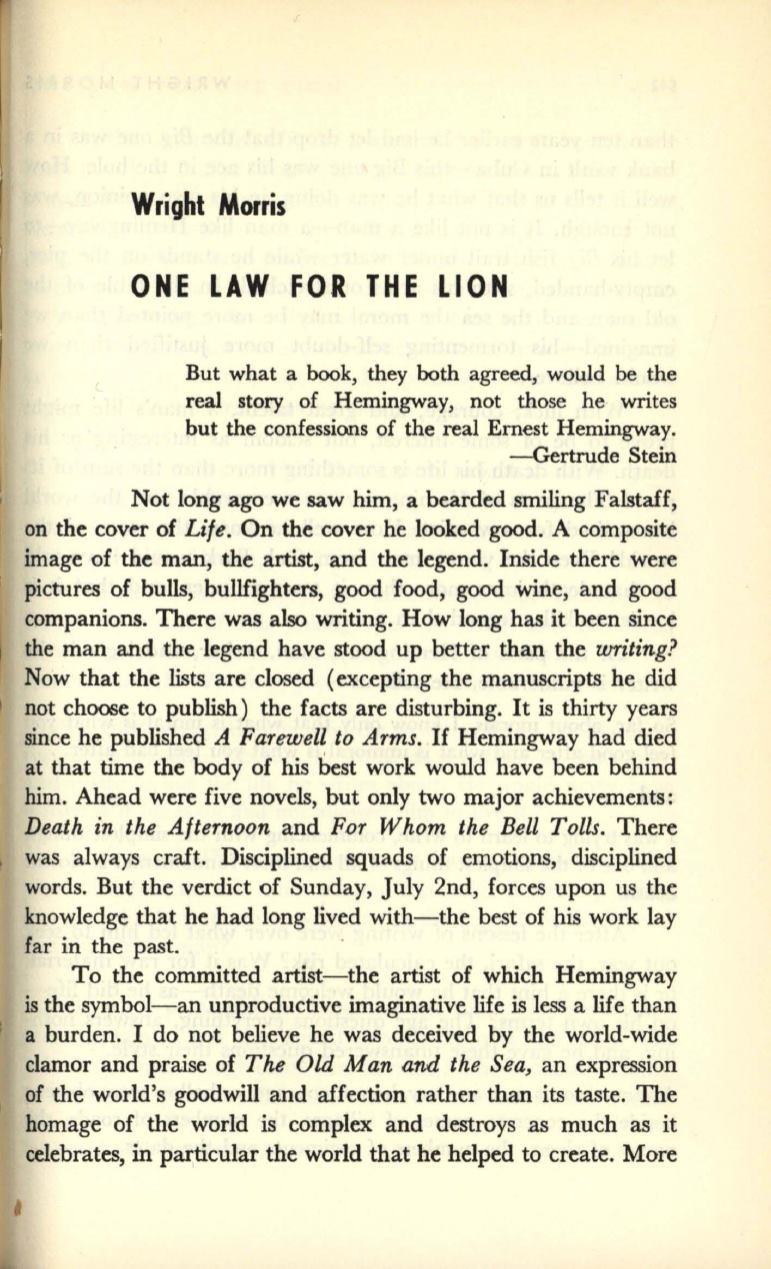
Wright Morris
ONE LAW FOR THE LION
But what a book, they both agreed, would
be
the
real story of Hemingway, not those he writes
but the confessions of the real Ernest Hemingway.
-Gertrude Stein
Not long ago we saw
him,
a bearded smiling Falstaff,
on the cover of
Life.
On the cover he looked good. A composite
image of the man, the artist, and the legend. Inside there were
pictures of bulls, bullfighters, good food, good wine, and good
companions. There was also writing. How long has it been since
the man and the legend have stood up better than the
writing?
Now that the lists are closed (excepting the manuscripts he did
not choose to publish) the facts are disturbing. It is thirty years
since he published
A Farewell to Arms.
If
Hemingway had died
at that time the body of his best work would have been behind
him. Ahead were five novels, but only two major achievements:
Death in the Afternoon
and
For Whom the Bell Tolls.
There
was always craft. Disciplined squads of emotions, disciplined
words. But the verdict of Sunday, July 2nd, forces upon us the
knowledge that he had long lived with-the best of his work lay
far in the past.
To the committed artist-the artist of which Hemingway
is the symbol-an unproductive imaginative life is less a life than
a burden. I do not believe he was deceived by the world-wide
clamor and praise of
The Old Man and the Sea,
an expression
of the world's goodwill and affection rather than its taste. The
homage of the world is complex and destroys as much as it
celebrates, in particular the world that he helped to create. More


